This weekend marks the Korean holiday of Chuseok, a traditional harvest festival. As most of you probably already know, the date of the holiday follows the lunar calendar so the holiday falls on a different date on the Gregorian calendar. This year the Chuseok holiday is Sept. 27.
My husband is traveling for work on Chuseok, so our family celebrated a week early with a homemade Korean meal. Likely the little guy and I will play yut nori and eat Korean again on the actual date of Chuseok.
If you’re wondering what to cook for the holiday, here are a couple of ideas from Korean Bapsang. The Galbijjim recipe can even be prepared in the slow cooker for added convenience. According to Hyosun, the owner of Korean Bapsang, both of these dishes are traditional ones to prepare for Chuseok. My family can personally recommend both. Yum!
http://www.koreanbapsang.com/2011/10/galbijjim-korean-braised-beef-short.html
www.koreanbapsang.com/2011/01/modeumjeon-fish-shrimps-and-zucchini.html
In Korea, Chuseok is about spending time with family and honoring ancestors. I highlighted ways to incorporate honoring ancestors in my 2011 Chuseok post. But I thought I’d add another suggestio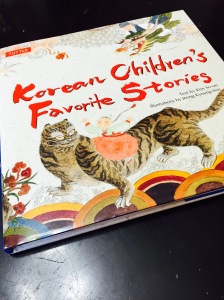 n for families celebrating Chuseok.
n for families celebrating Chuseok.
Tuttle Publishing offers several books covering Korean culture or language. Their book, Korean Children’s Favorite Stories by Kim So-Un, is an English-language book filled with folk tales that have been told by Korean families for generations. Some of the stories are unique to Korea, while the plot line of some will be familiar. The illustrations by Jeong Kyoung-Sim are wonderfully done in a Korean style that resembles paintings done on ancient Korean screens.
This book would be a wonderful addition to a family’s library and a fun way to share Korean culture with your children.

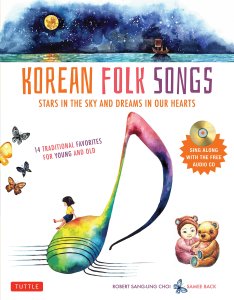
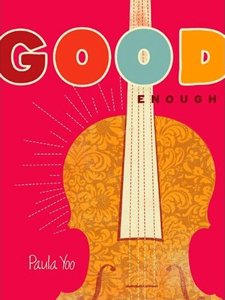 In case you haven’t noticed, I love children’s literature. Picture books, chapter books, doesn’t matter, I love them. My most recent read in this category is Good Enough by Paula Yoo, and I must say I loved it.
In case you haven’t noticed, I love children’s literature. Picture books, chapter books, doesn’t matter, I love them. My most recent read in this category is Good Enough by Paula Yoo, and I must say I loved it.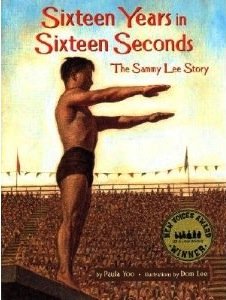 Sixteen Years in Sixteen Seconds: The Sammy Lee Story by Paula Yoo recounts the story of Sammy Lee, the first Asian American to win an Olympic gold medal. Lee accomplished this at the London games in 1948 after becoming a doctor, while serving with the military, and despite facing discrimination. Lee was 28 years old when he won his gold medal, which he defended four years later at the 1952 games in Helsinki, Finland.
Sixteen Years in Sixteen Seconds: The Sammy Lee Story by Paula Yoo recounts the story of Sammy Lee, the first Asian American to win an Olympic gold medal. Lee accomplished this at the London games in 1948 after becoming a doctor, while serving with the military, and despite facing discrimination. Lee was 28 years old when he won his gold medal, which he defended four years later at the 1952 games in Helsinki, Finland.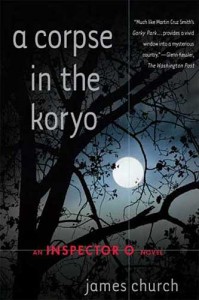 So if you haven’t noticed already, I LOVE to read. Many people told me once you become a mom there’s not time for books. Well, at least for me, that’s not true; although often I only get to read for a few months right before falling asleep. Still, it’s something. When I got my Nook last fall, I did random searches on it for “Korea” and these books are just some of the many that came up.
So if you haven’t noticed already, I LOVE to read. Many people told me once you become a mom there’s not time for books. Well, at least for me, that’s not true; although often I only get to read for a few months right before falling asleep. Still, it’s something. When I got my Nook last fall, I did random searches on it for “Korea” and these books are just some of the many that came up.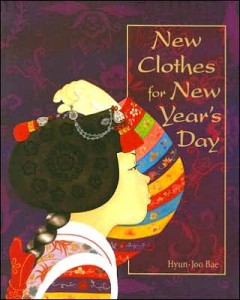 This adorable book is about a little girl who is excited about the new hanbok she’s getting for the Seolnal celebration. The illustrations are beautiful, and are wonderful in telling the story of this little girl as she puts on each piece of her hanbok.
This adorable book is about a little girl who is excited about the new hanbok she’s getting for the Seolnal celebration. The illustrations are beautiful, and are wonderful in telling the story of this little girl as she puts on each piece of her hanbok.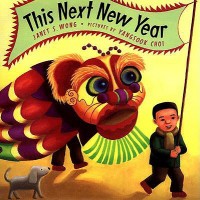 Since most Americans think of this holiday as “Chinese” new year, it’s hard to find books that show the Korean celebration of seolnal. So finding This Next New Year by Janet Wong was an exciting day for me. (Sounds pathetic, but hey, I love books!)
Since most Americans think of this holiday as “Chinese” new year, it’s hard to find books that show the Korean celebration of seolnal. So finding This Next New Year by Janet Wong was an exciting day for me. (Sounds pathetic, but hey, I love books!)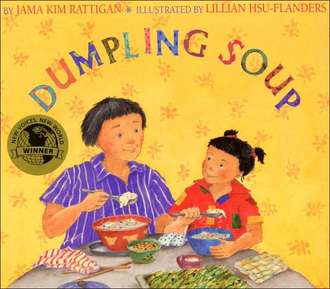
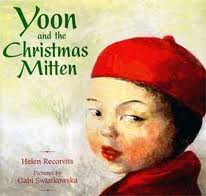 Yoon and the Christmas Mitten by Helen Recorvits continues the story of Yoon, a Korean immigrant that began in My Name is Yoon. In the Christmas Mitten, Yoon learns about the traditions of the Christmas holiday while at school from her teacher and fellow students. As the holiday approaches, Yoon becomes more excited about the possibilities it holds. But her father won’t hear of the holiday. Finally a compromise is reached between the two and Yoon finds the holiday to be an enjoyable one, even if the celebration is somewhat unique.
Yoon and the Christmas Mitten by Helen Recorvits continues the story of Yoon, a Korean immigrant that began in My Name is Yoon. In the Christmas Mitten, Yoon learns about the traditions of the Christmas holiday while at school from her teacher and fellow students. As the holiday approaches, Yoon becomes more excited about the possibilities it holds. But her father won’t hear of the holiday. Finally a compromise is reached between the two and Yoon finds the holiday to be an enjoyable one, even if the celebration is somewhat unique.